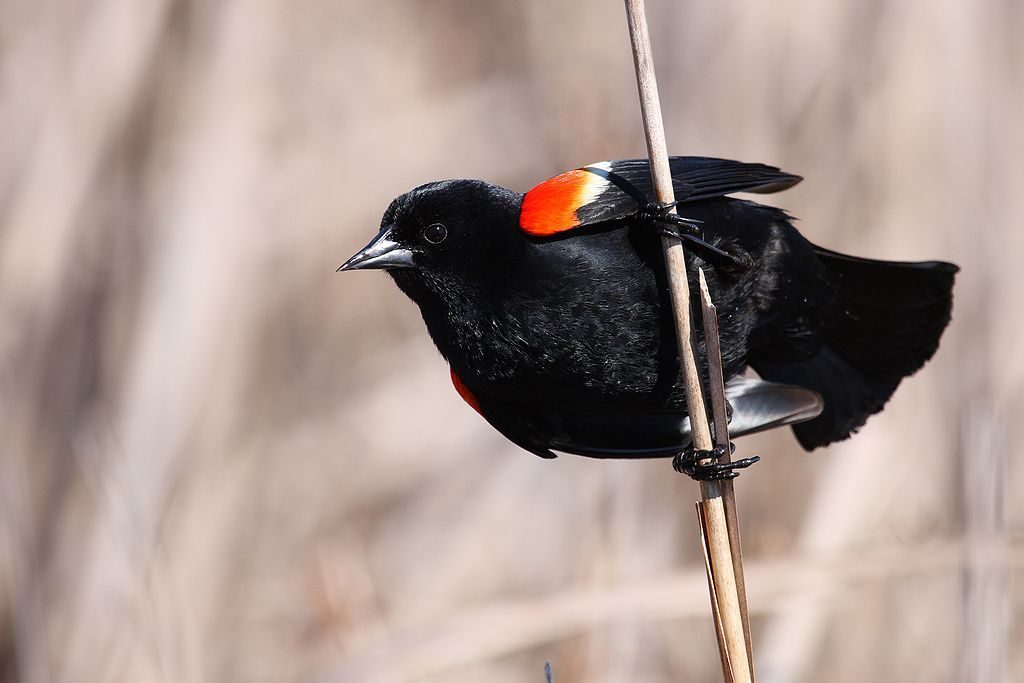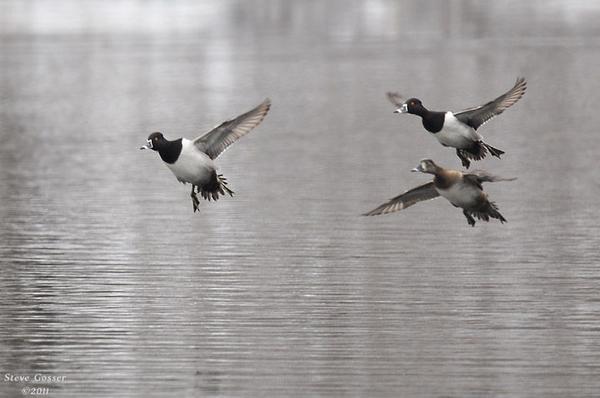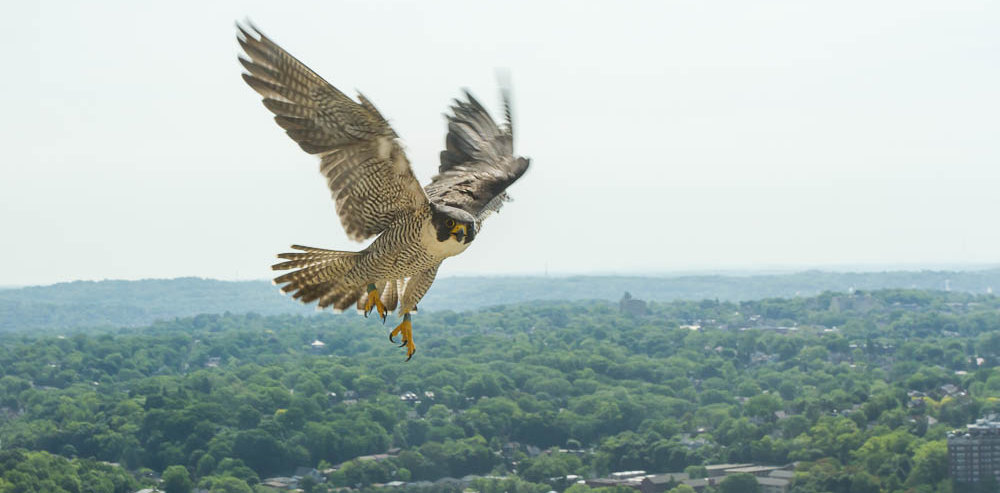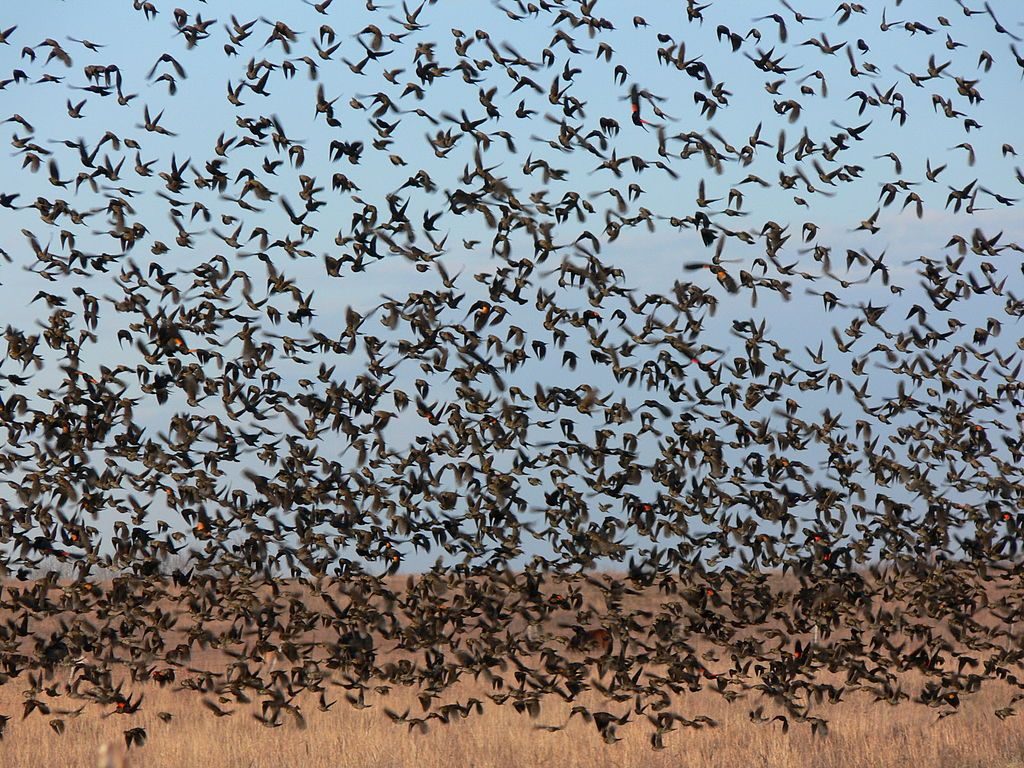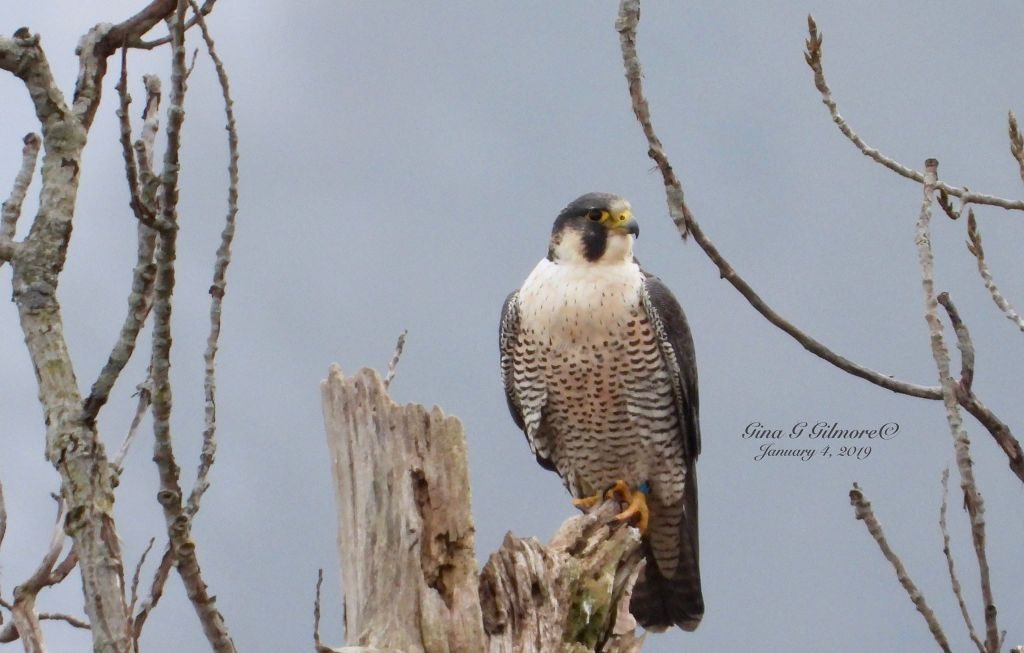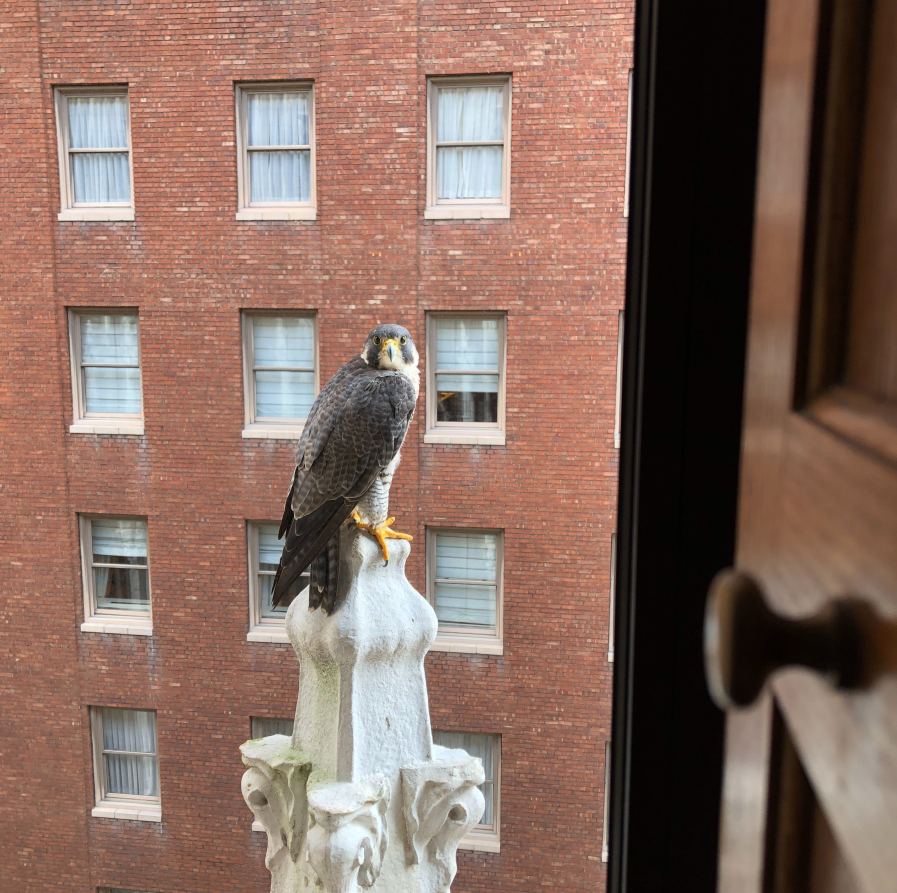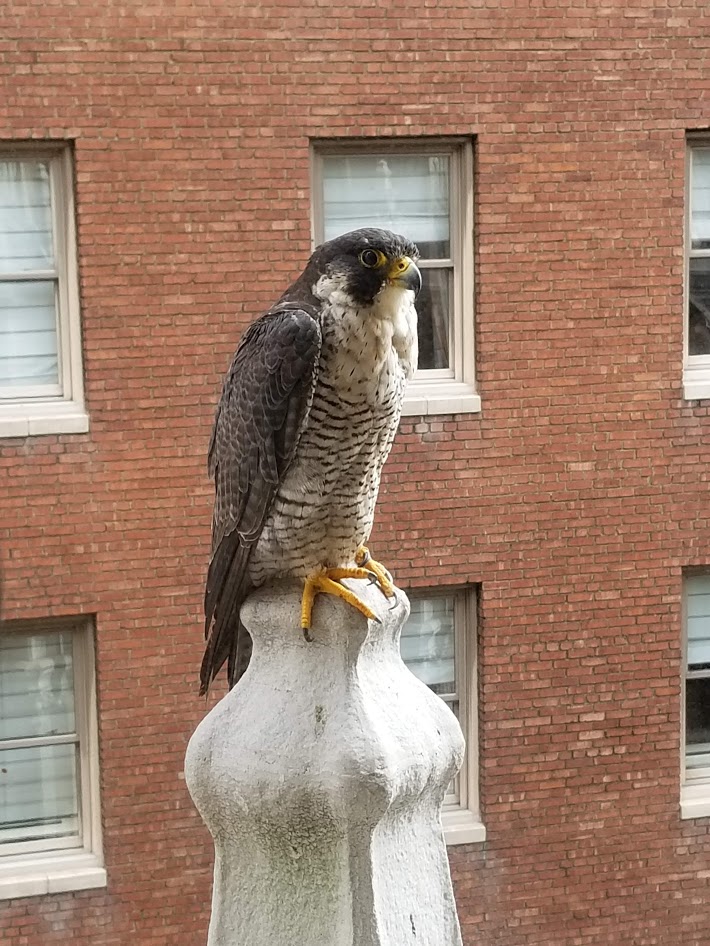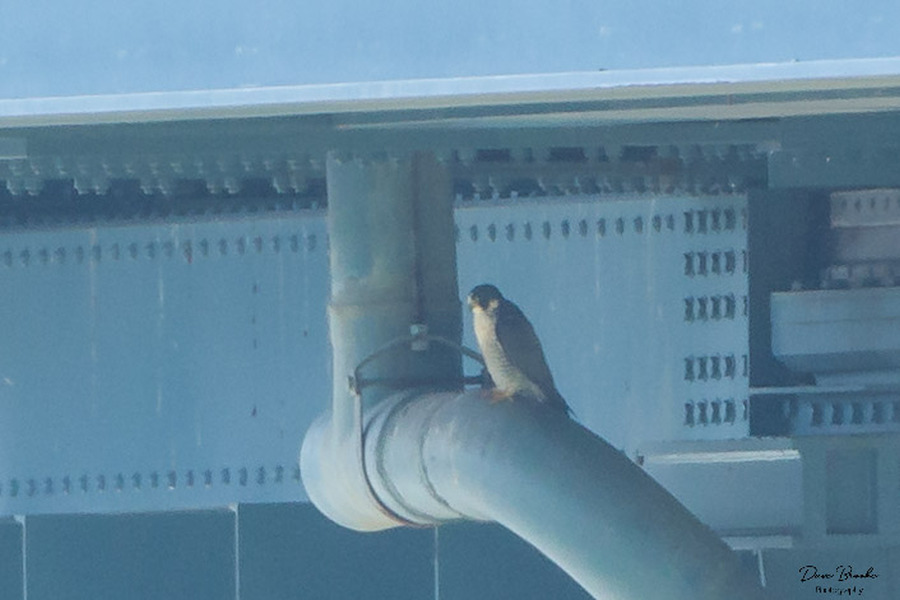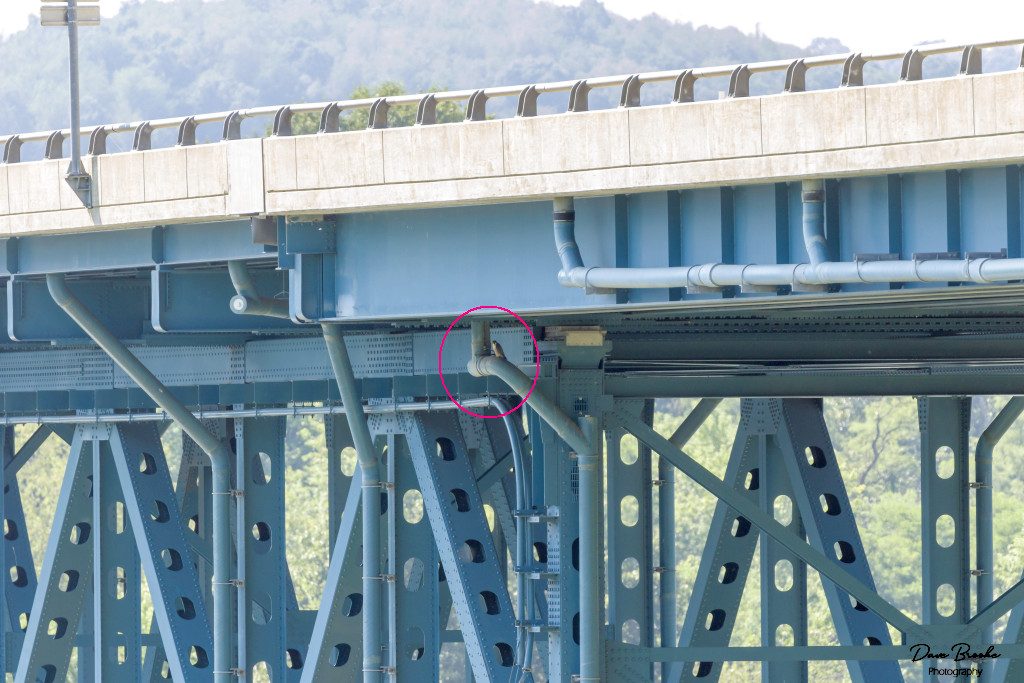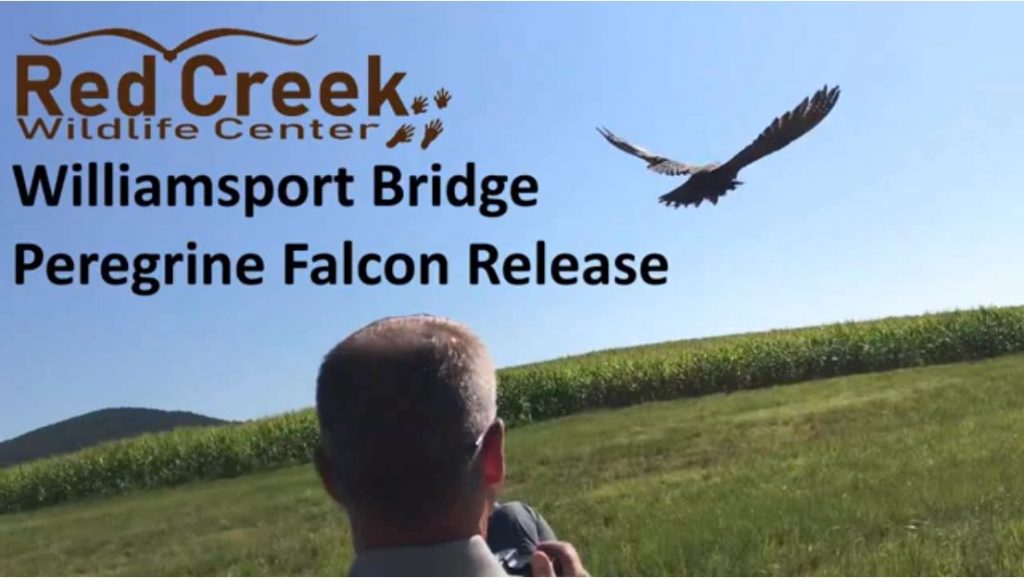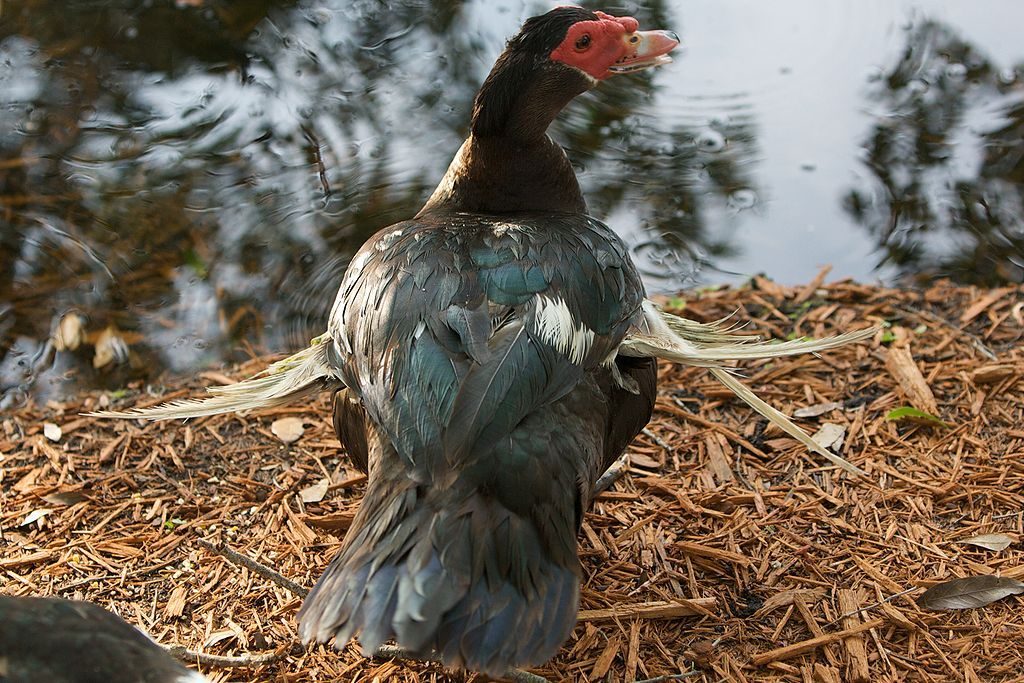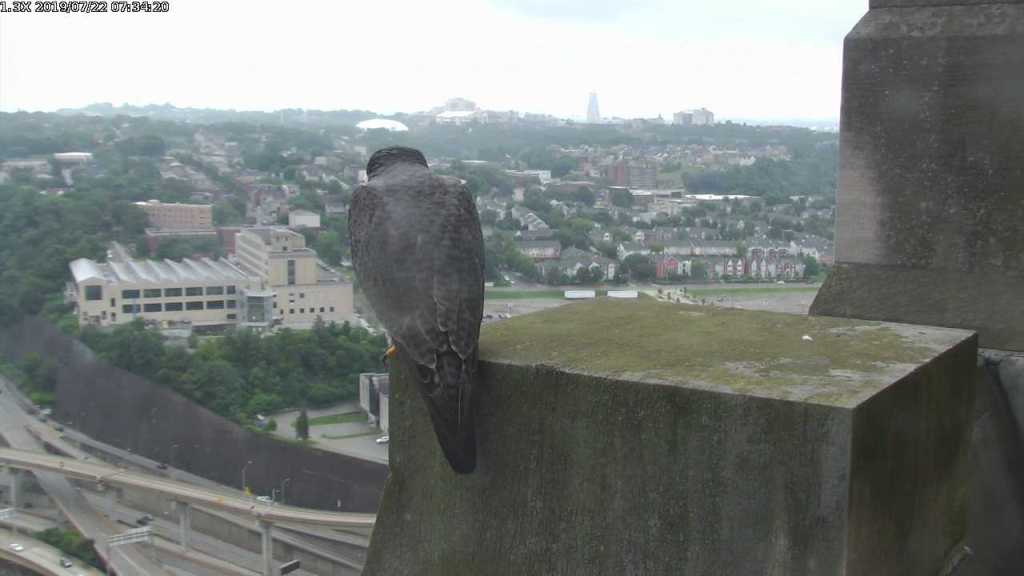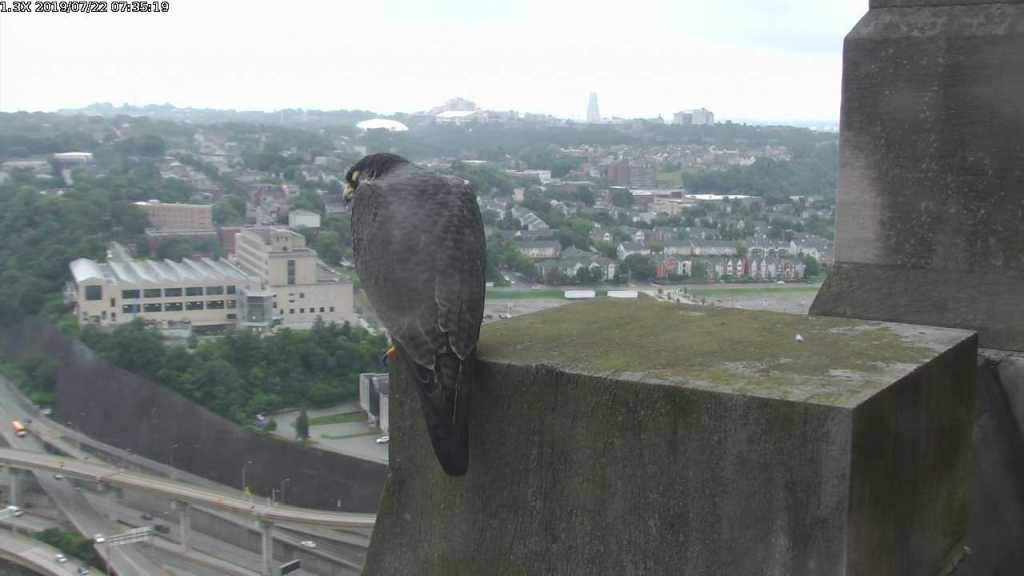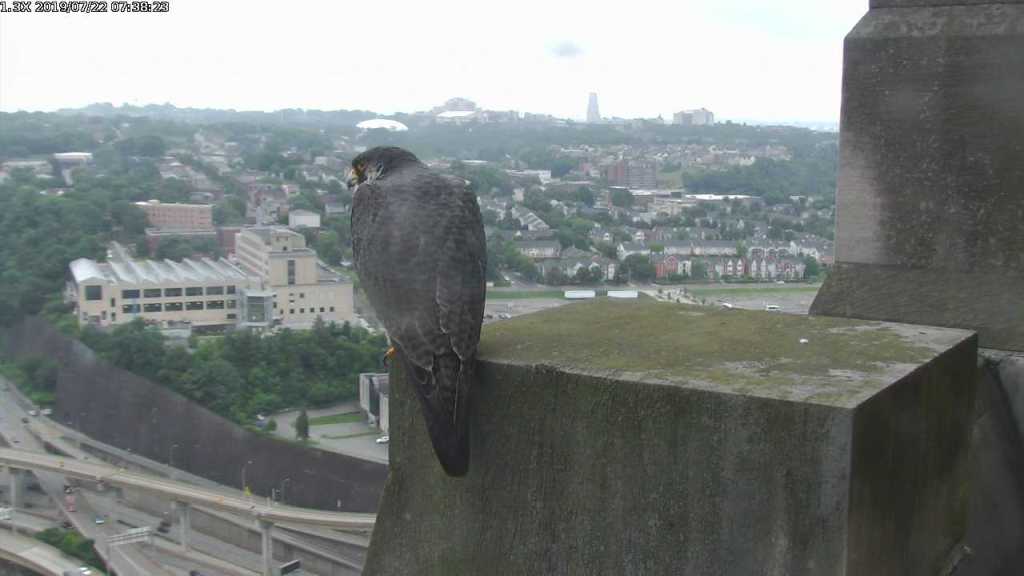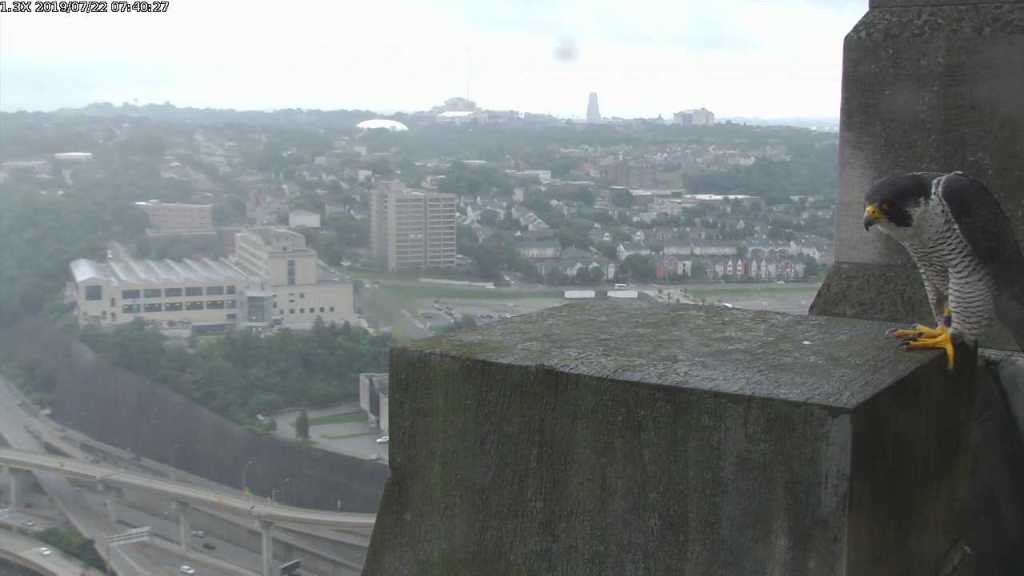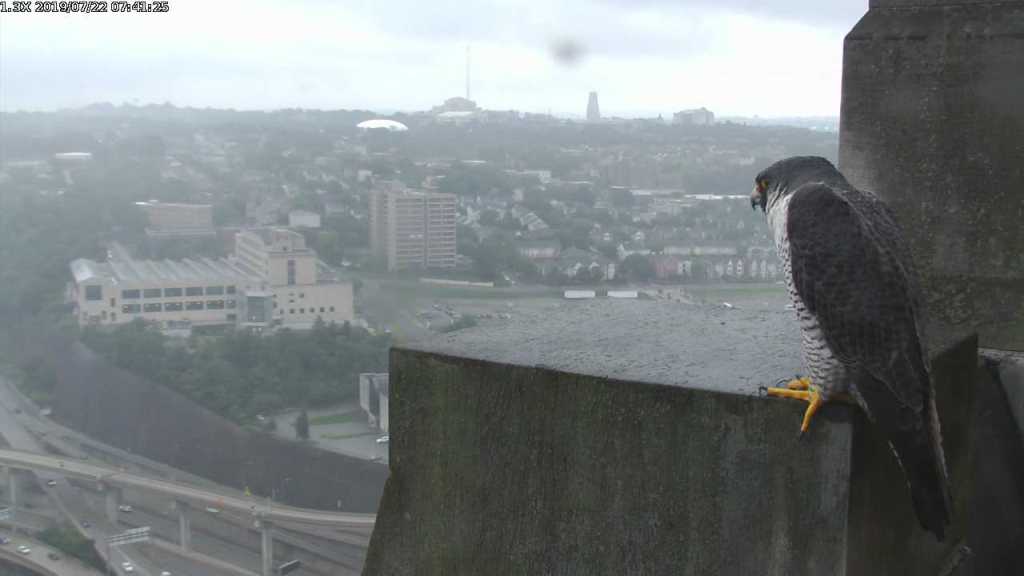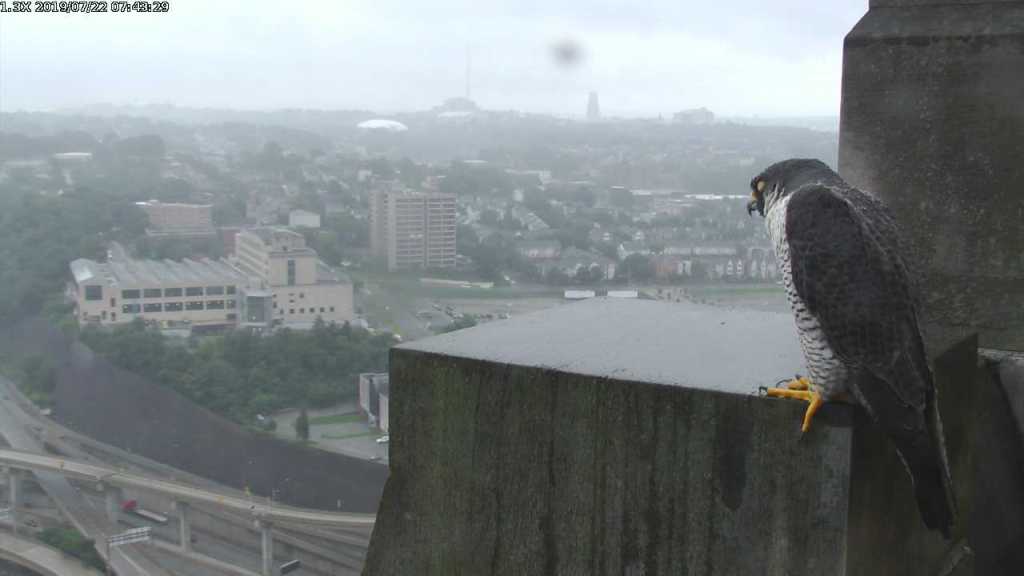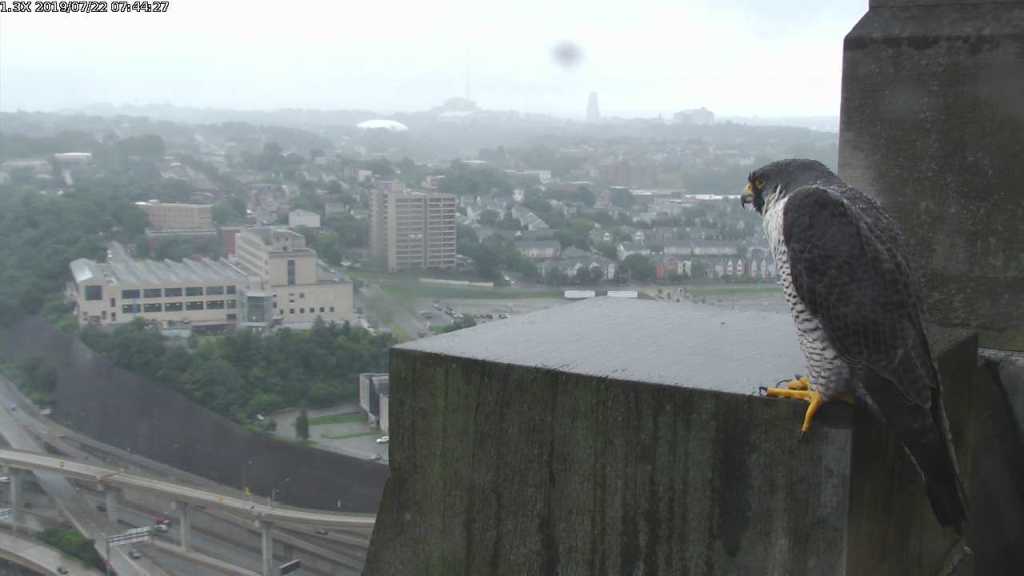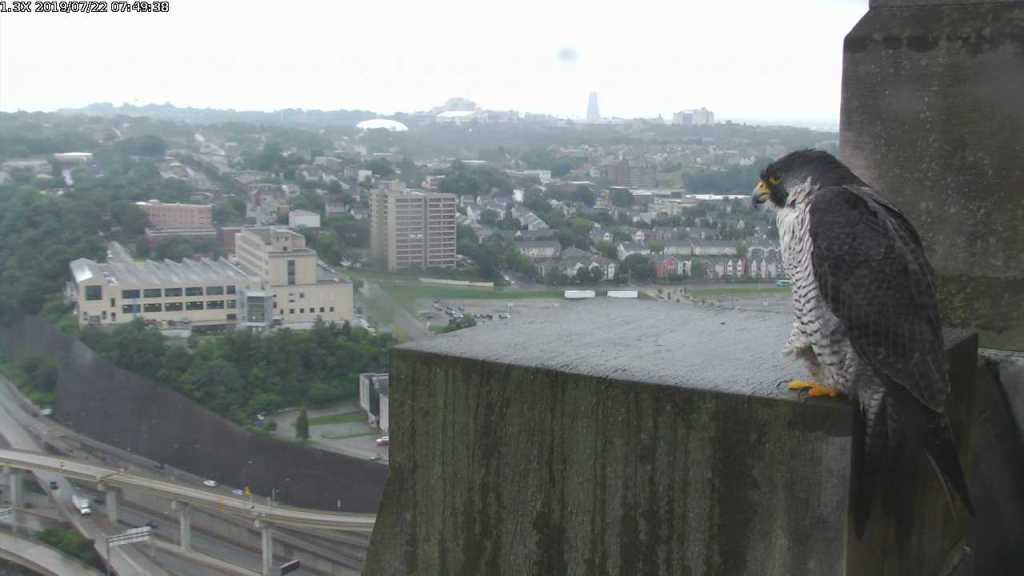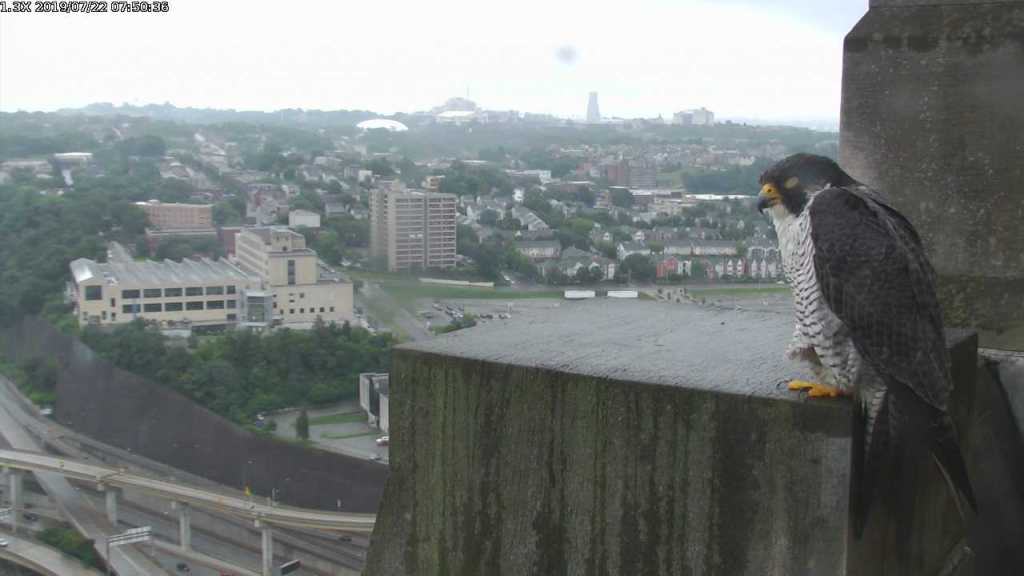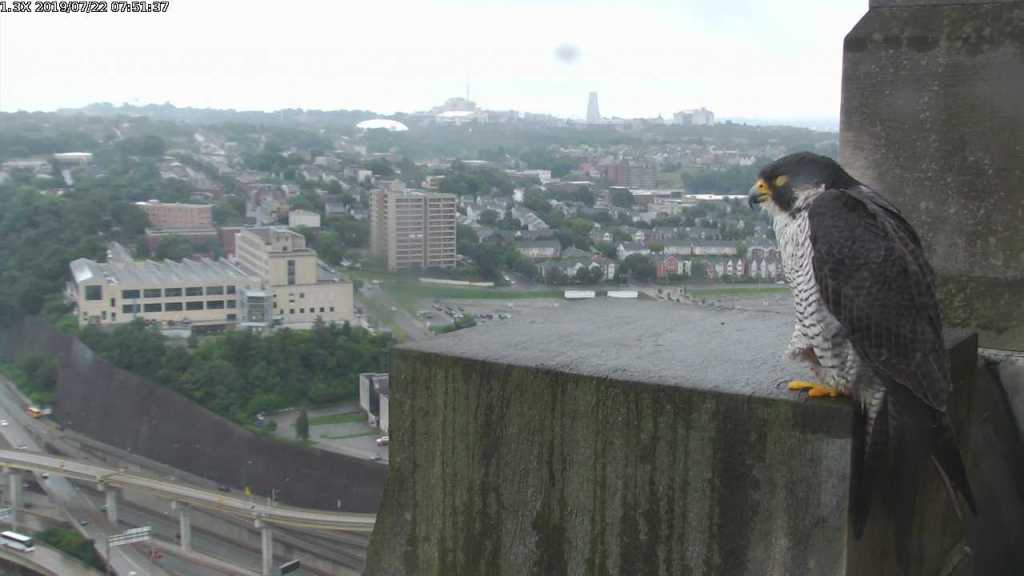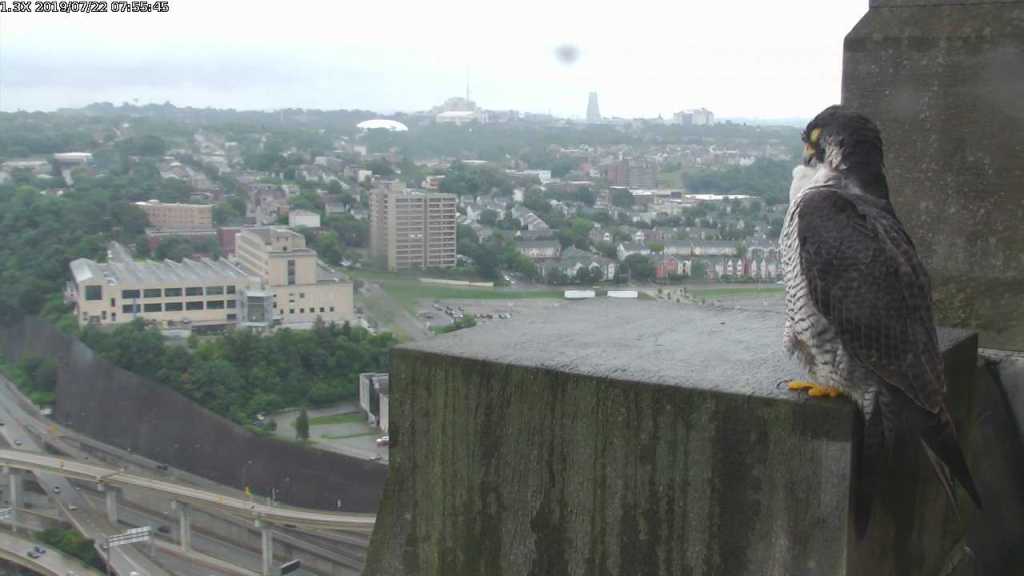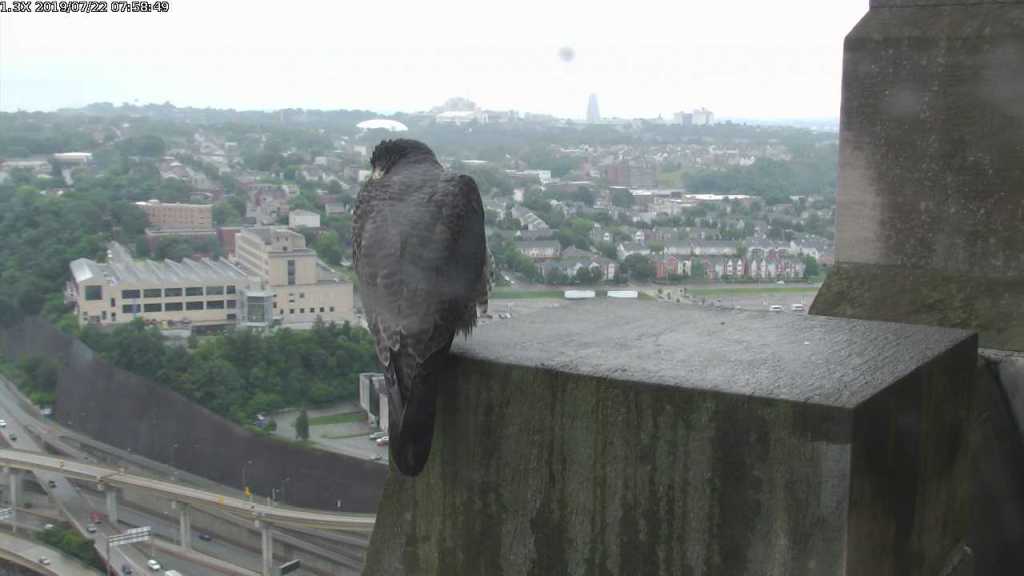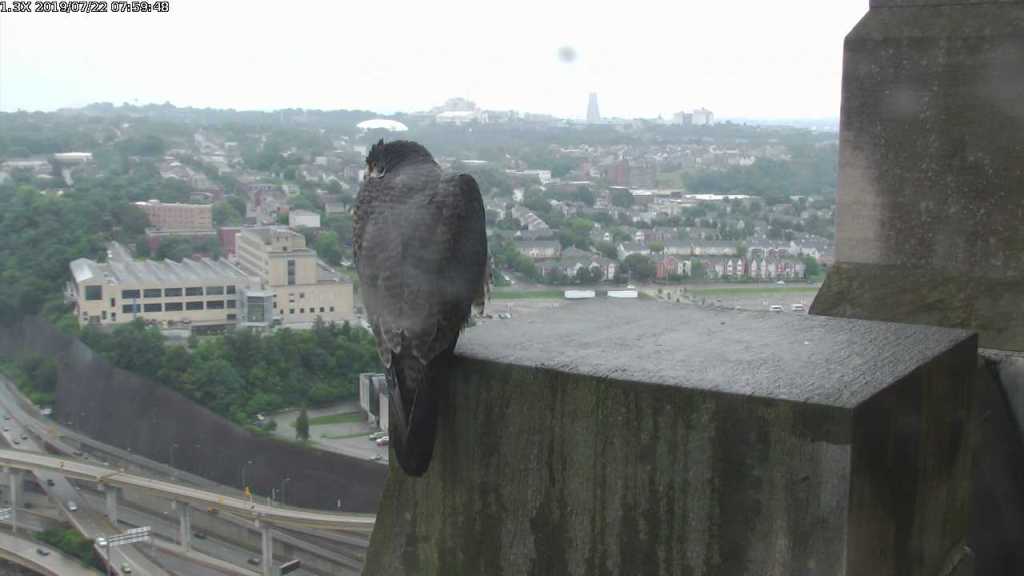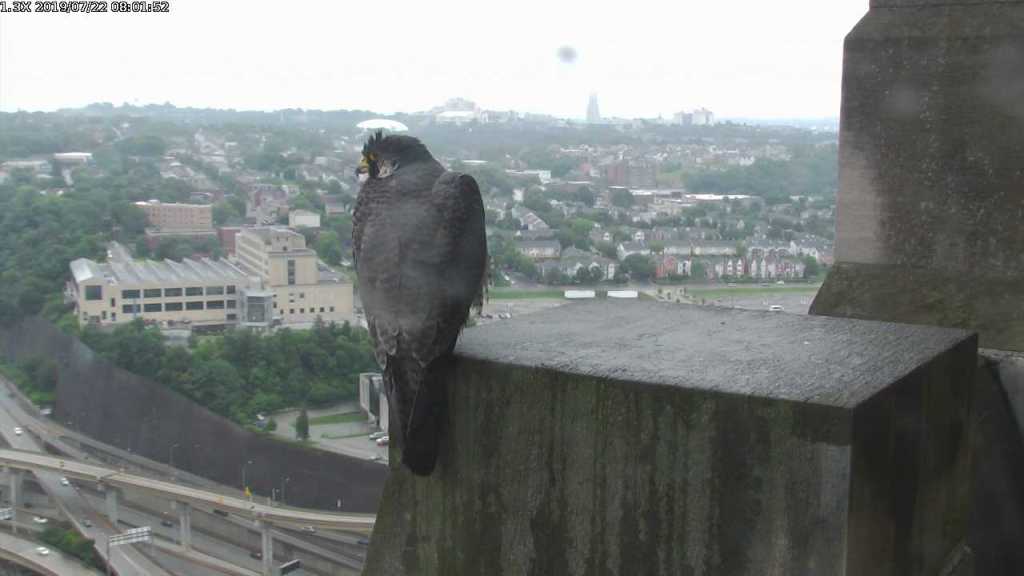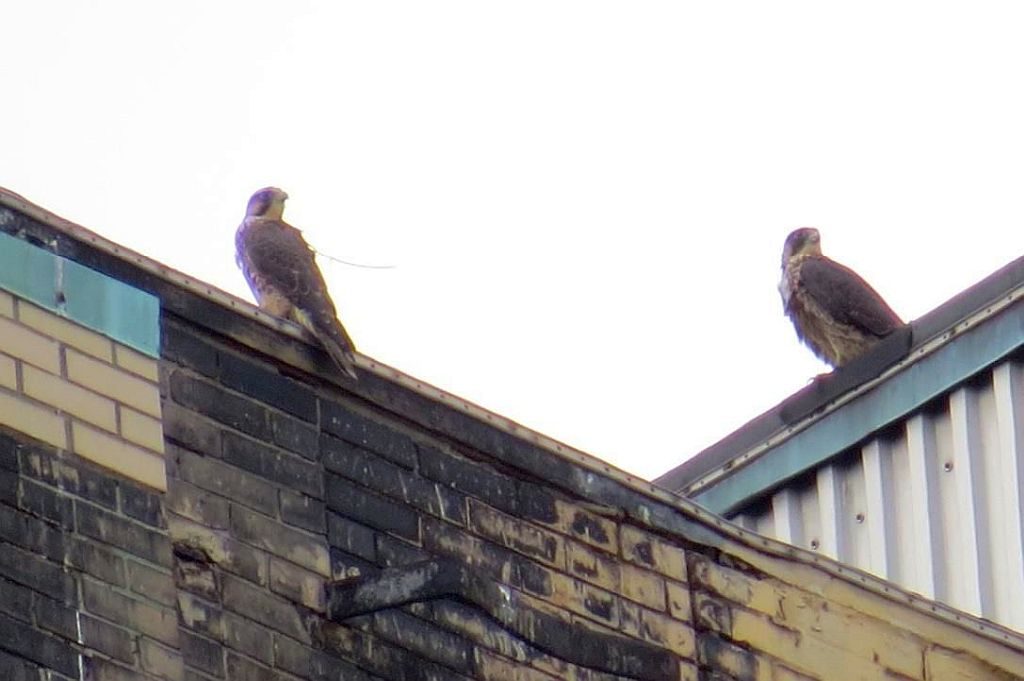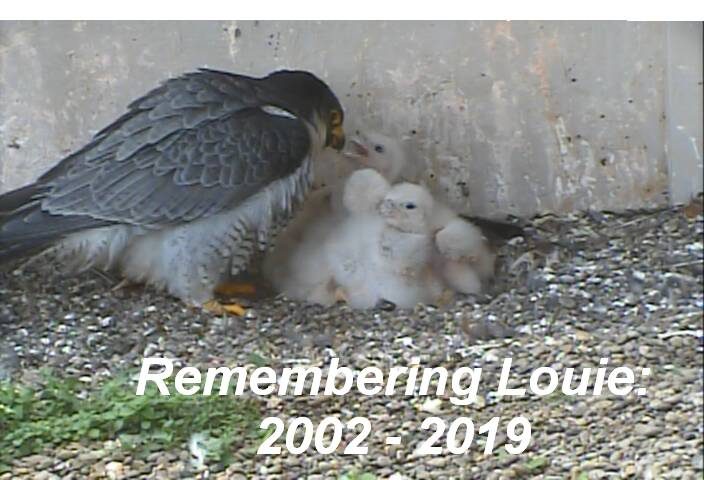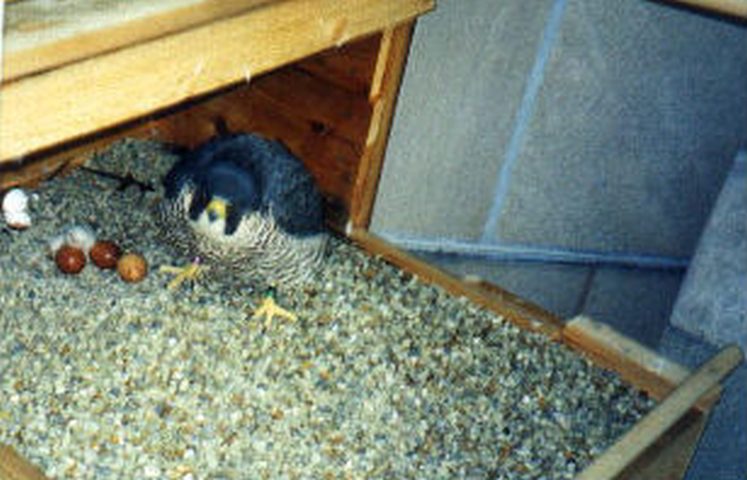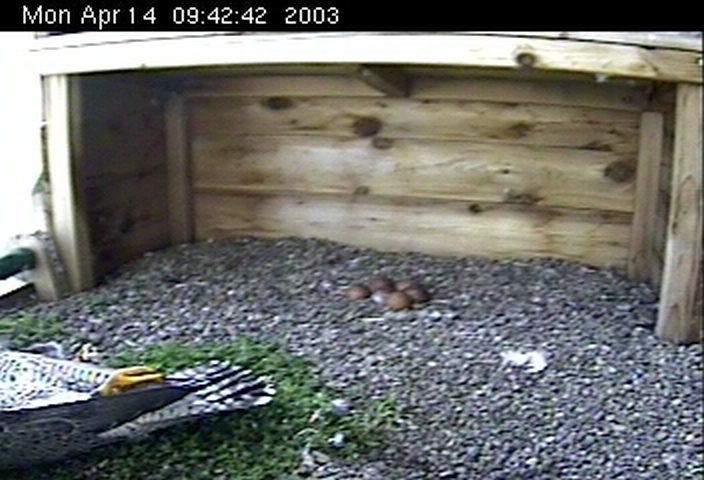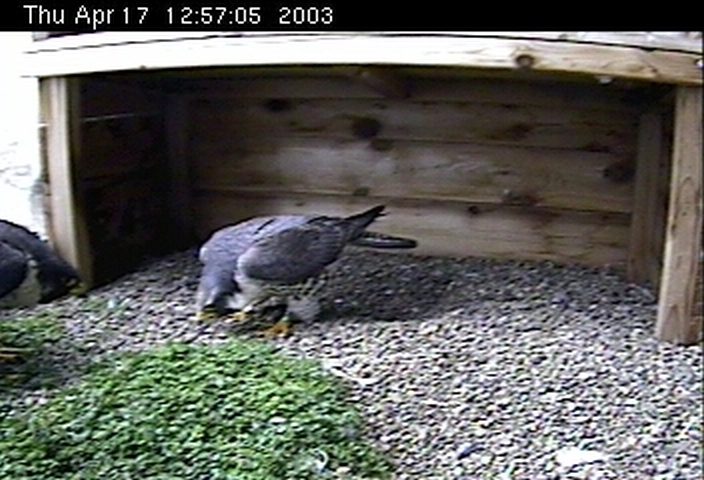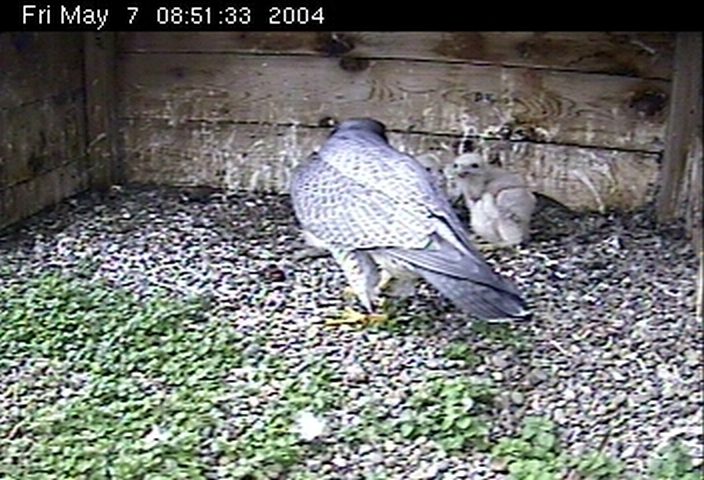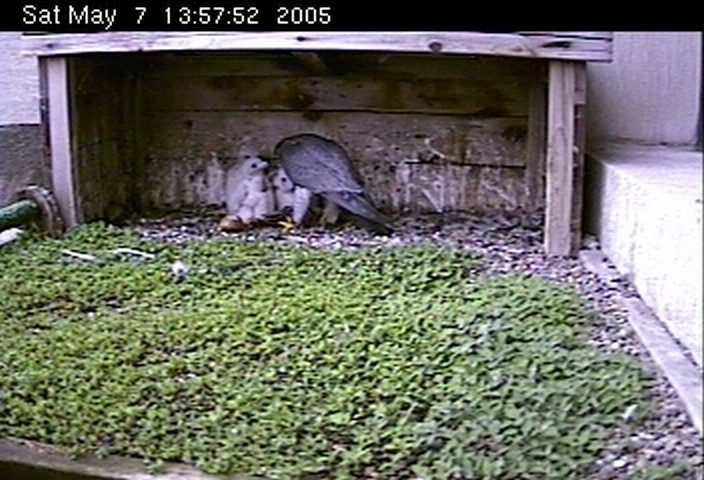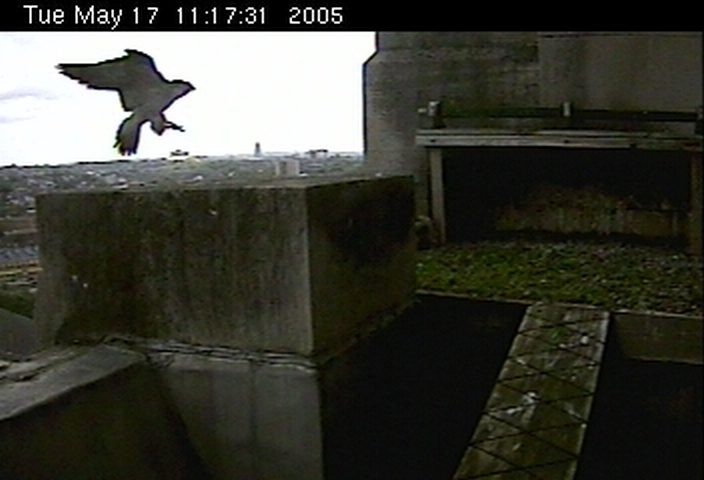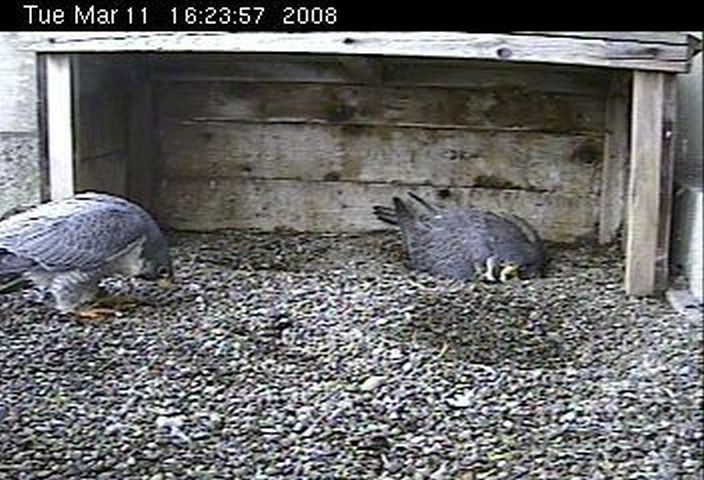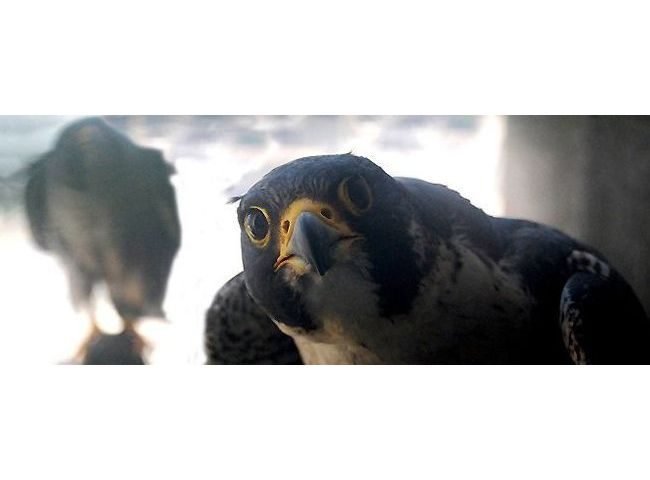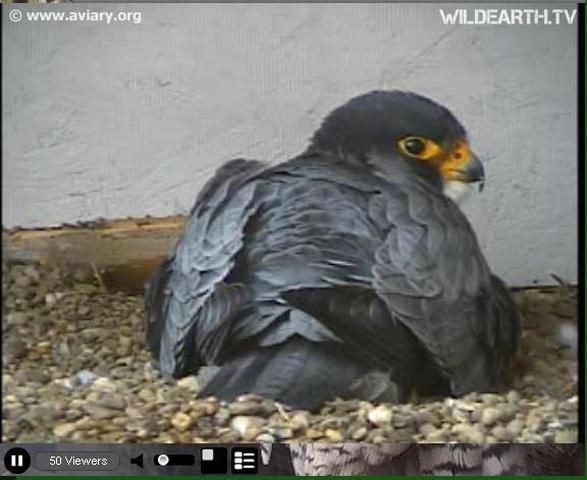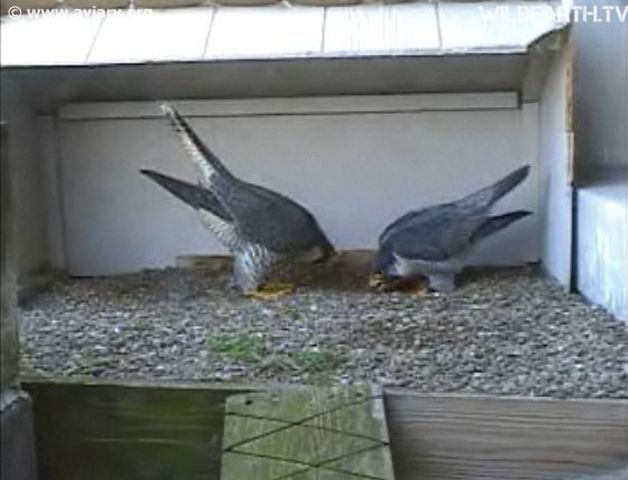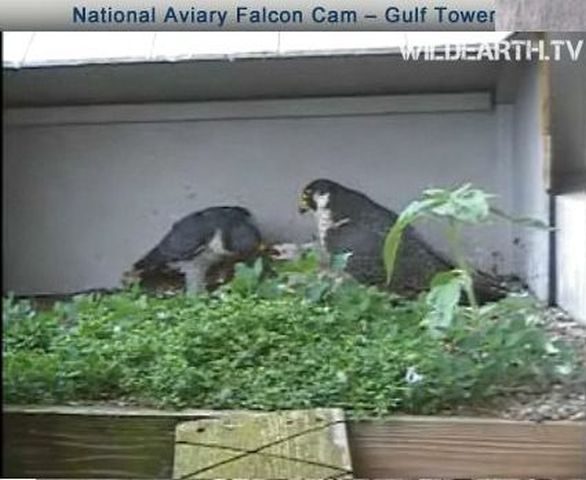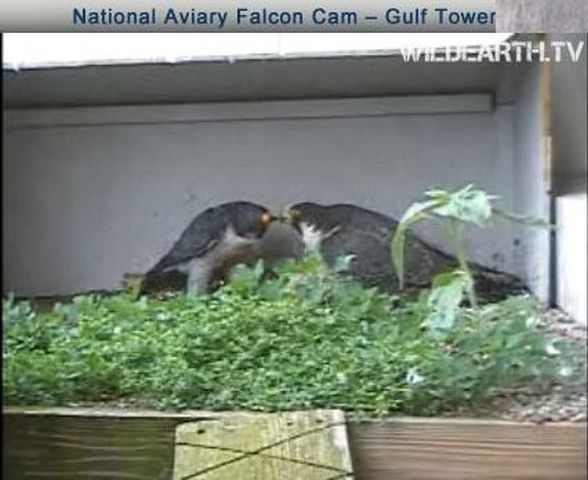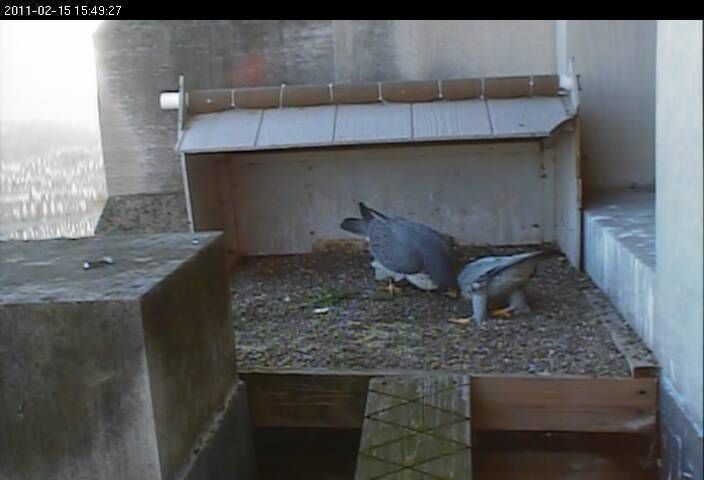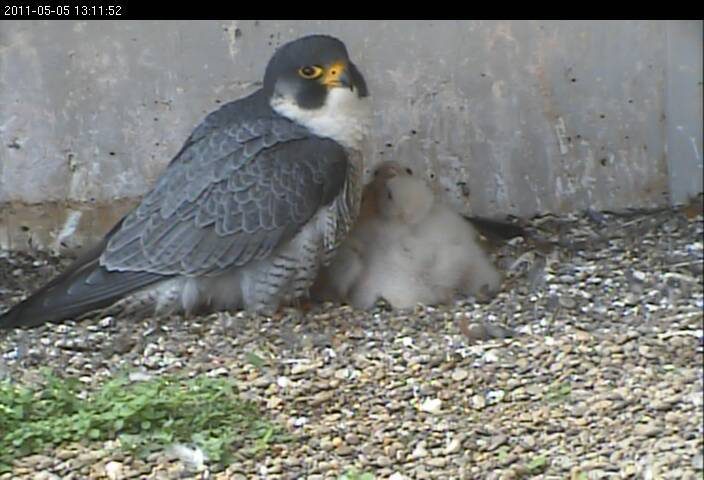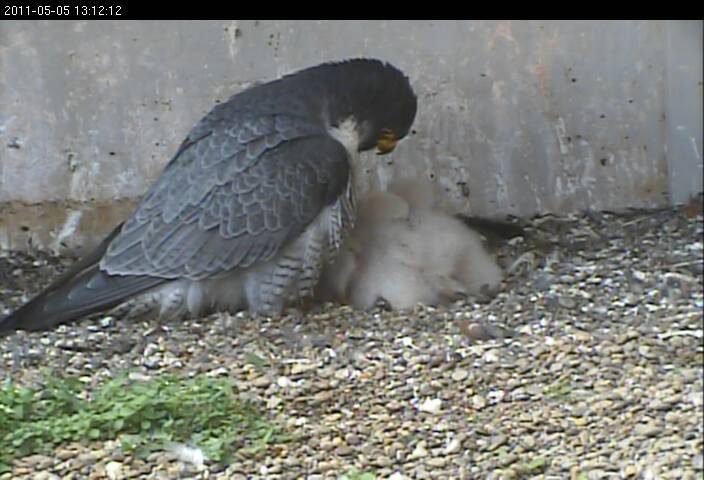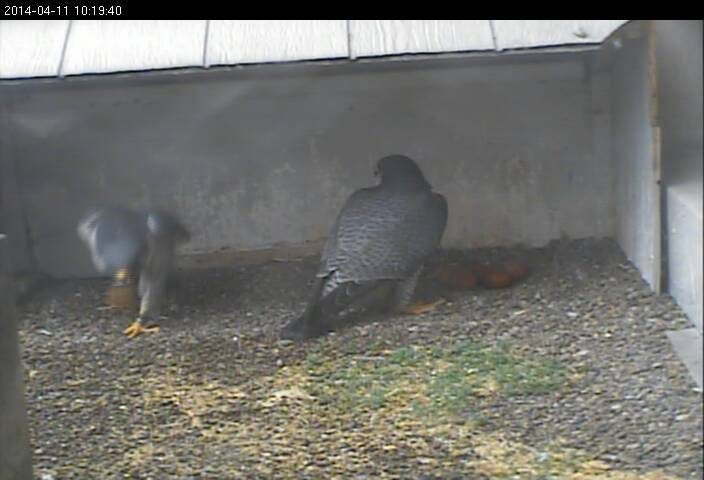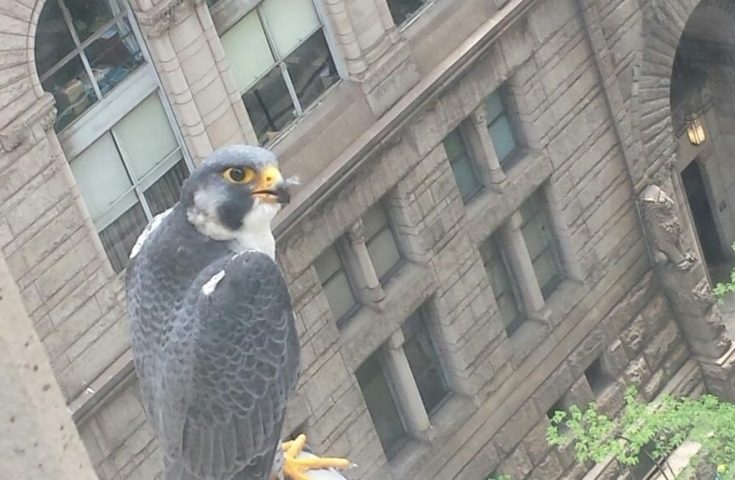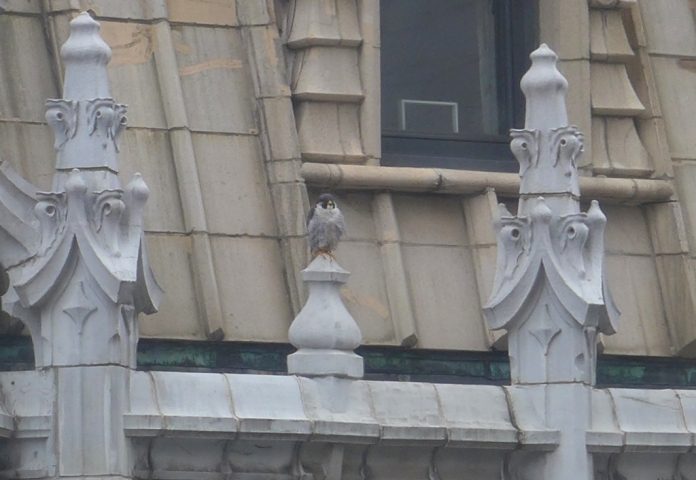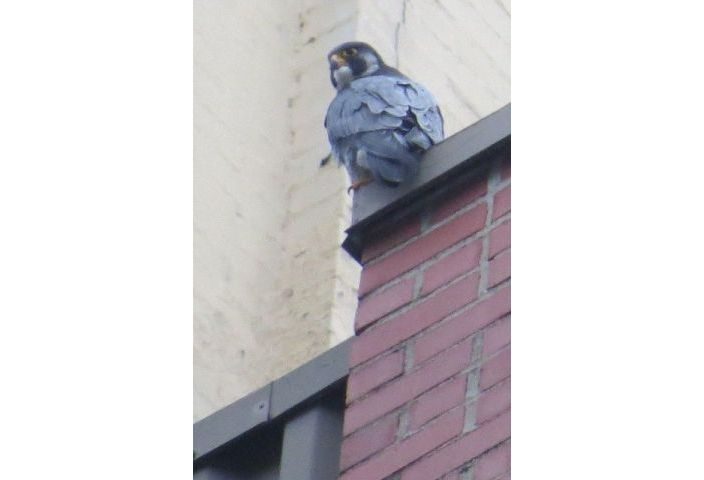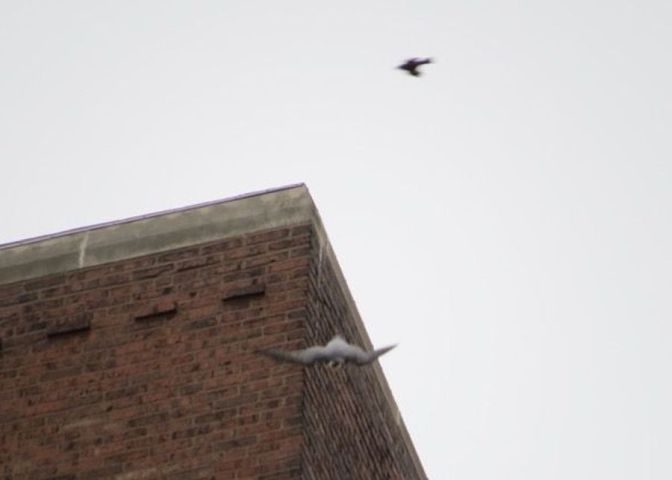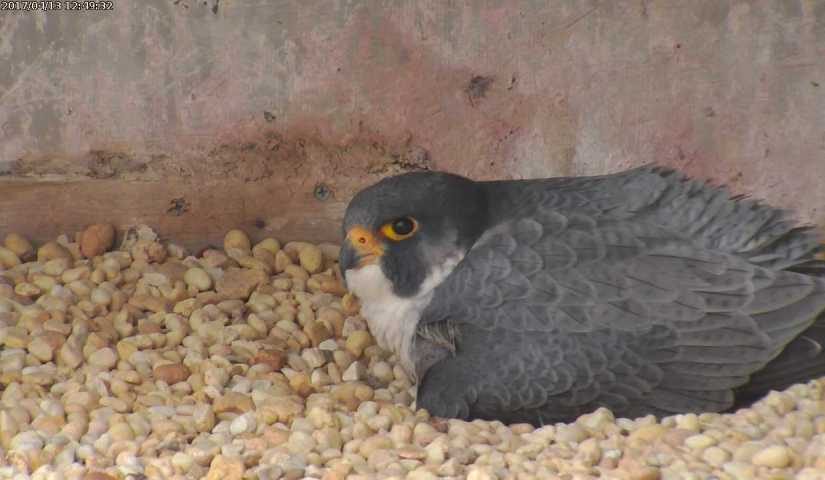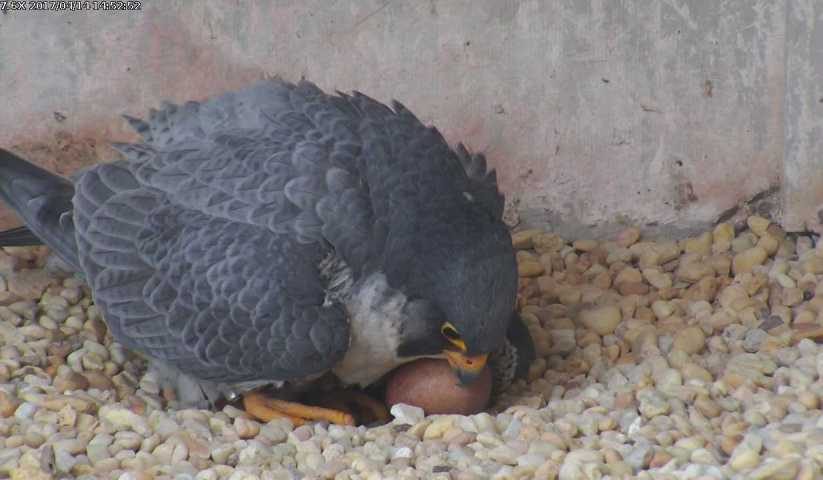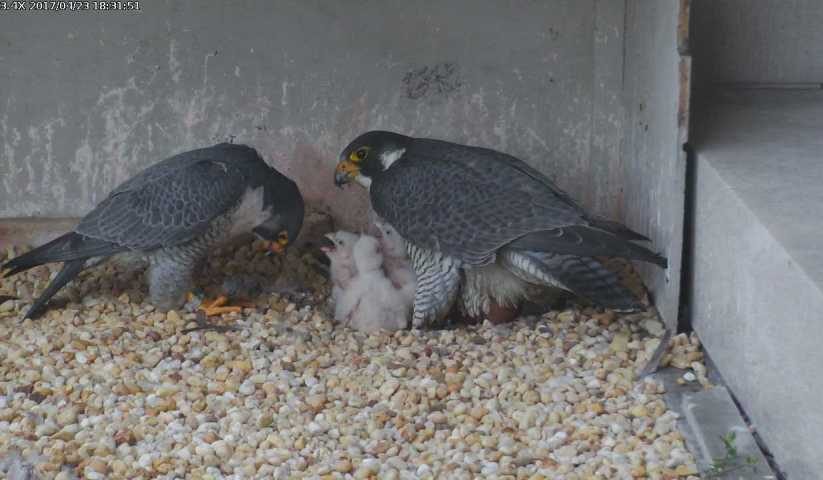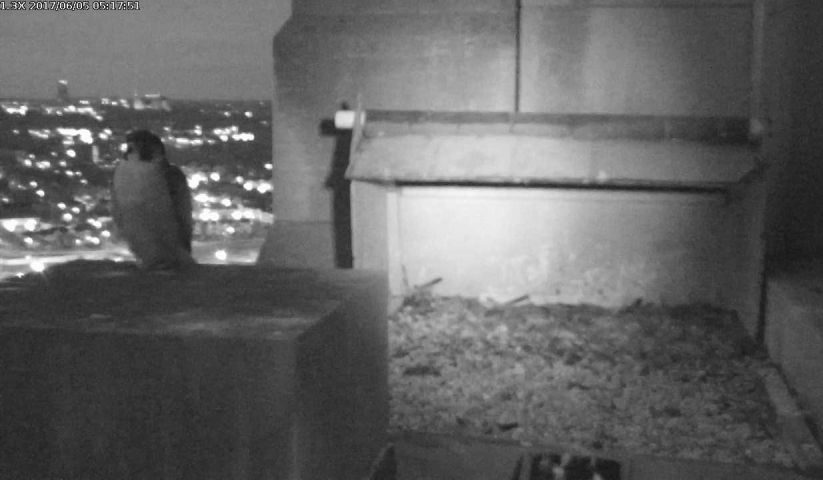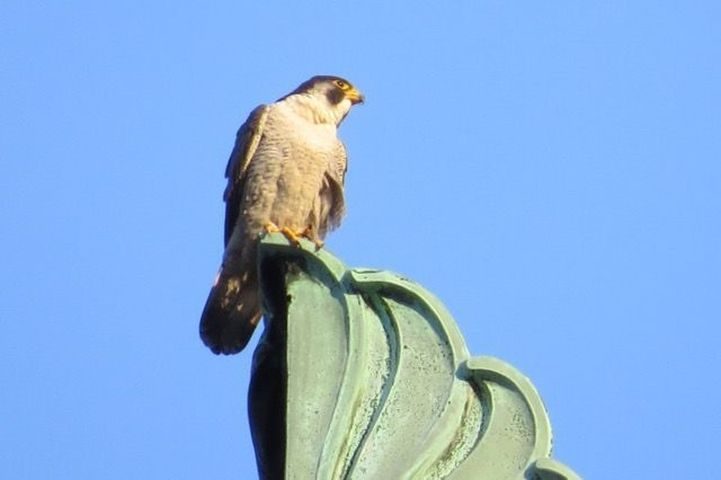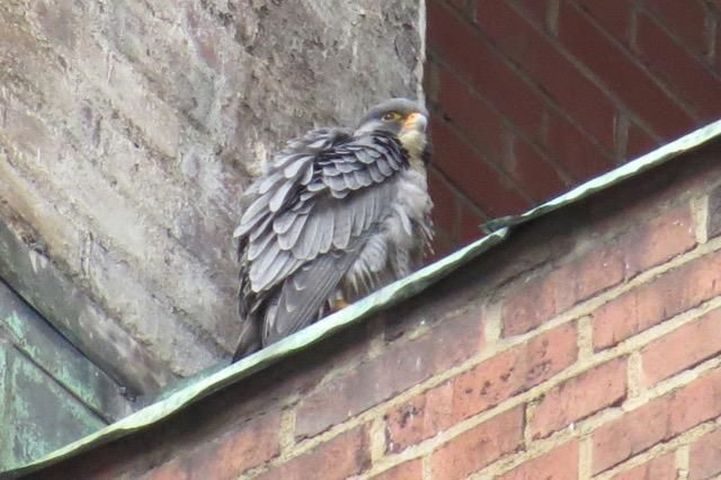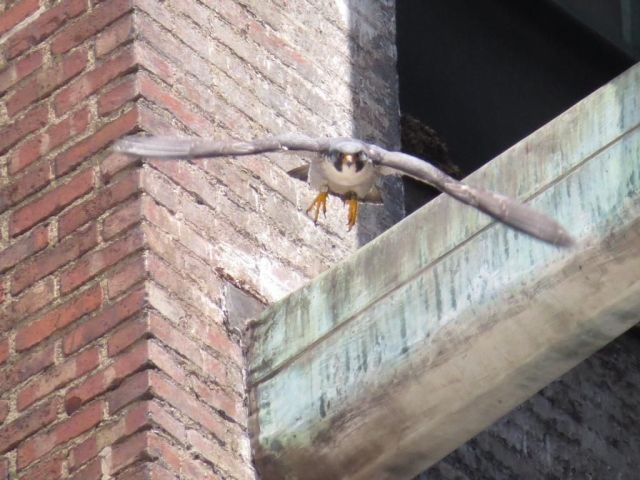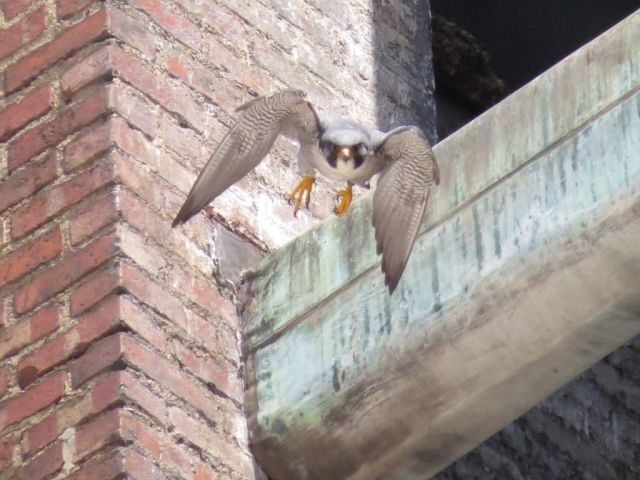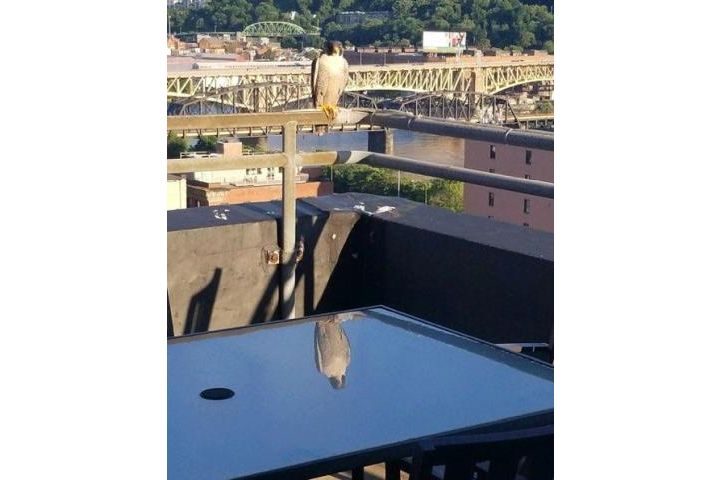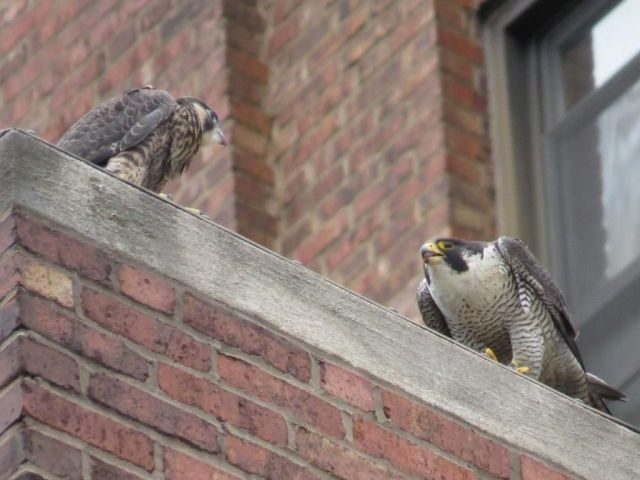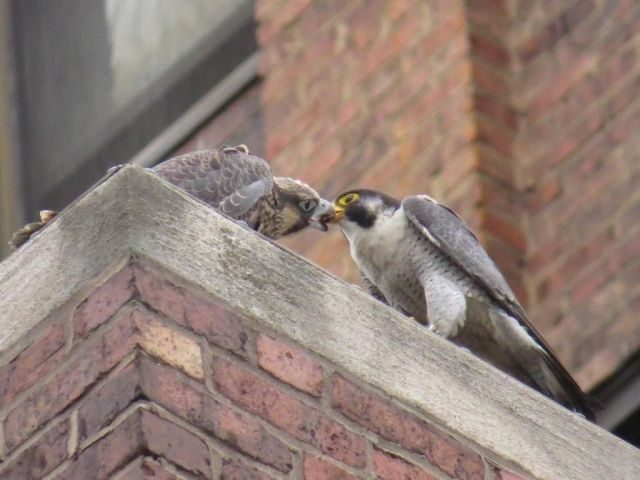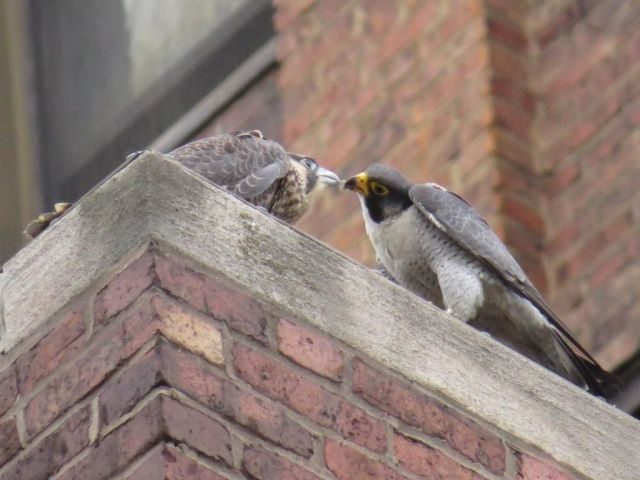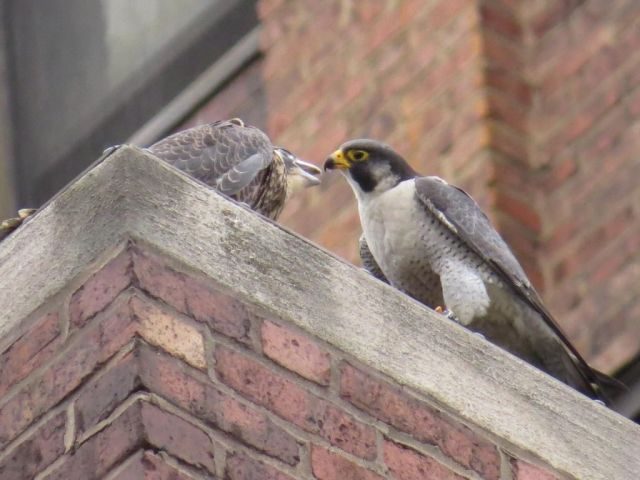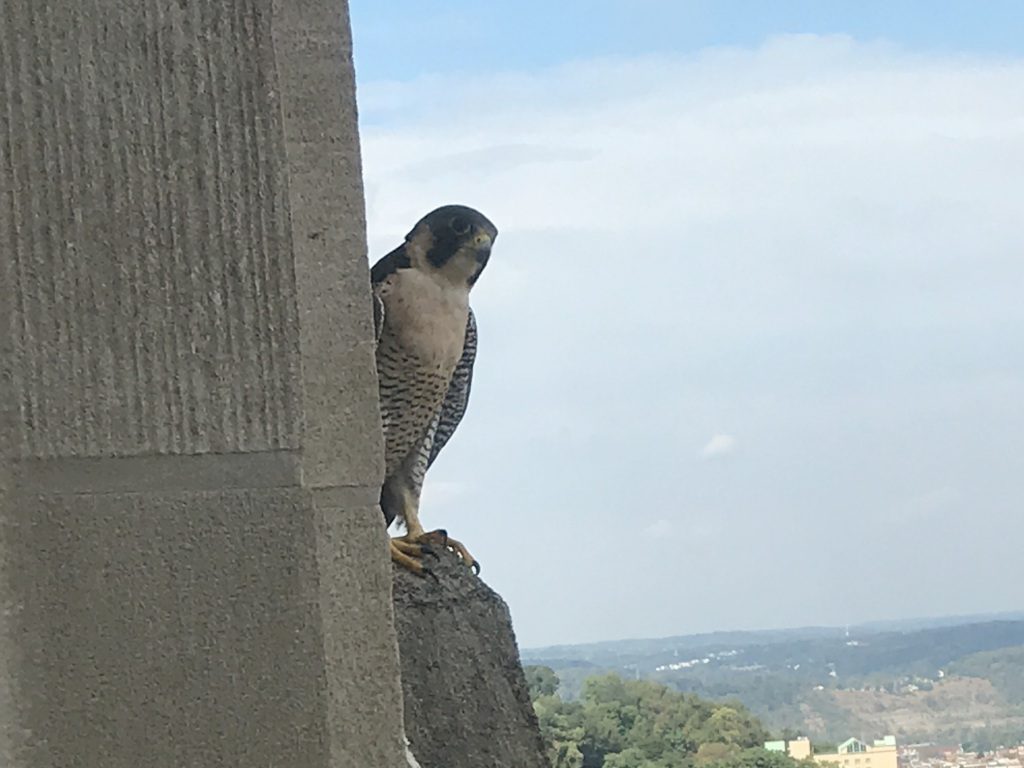
There’s still a pair of peregrine falcons at the Cathedral of Learning but one of them is a new bird. Last week Dr. Alan Juffs sent me photographs of a peregrine perched outside his window. I thought the bird might be new to Pitt but was unable to investigate until now. Here’s what I’ve found so far.
Yesterday afternoon (8 October 2019) I visited Alan Juffs to talk about the new peregrine and reminisce about Dorothy who frequented the same perches this bird has adopted. Juffs’ photographs and videos provide excellent documentation:
- Unbanded! We don’t know where it came from but we do know it’s not from the Cathedral of Learning because all Pitt offspring are banded.
- Clear breast with faint peach color, no spots.
- Peach color extends onto belly, underlying the dark spots/stripes.
- Very dark helmet and malar stripes. White throat stands out against dark head and malar stripes when viewed from the ground.
- Long yellow legs
- Dark back
- Perches on the stone peaks on 27th and 28th floors on north (5th Ave) and east (Heinz Chapel) sides of the Cathedral of Learning.
- Curious about humans inside the windows.
- Calls to the other peregrine; the other peregrine calls, too.
Because it’s not banded, it’s hard to find out if this bird is male or female. Right now we don’t know.
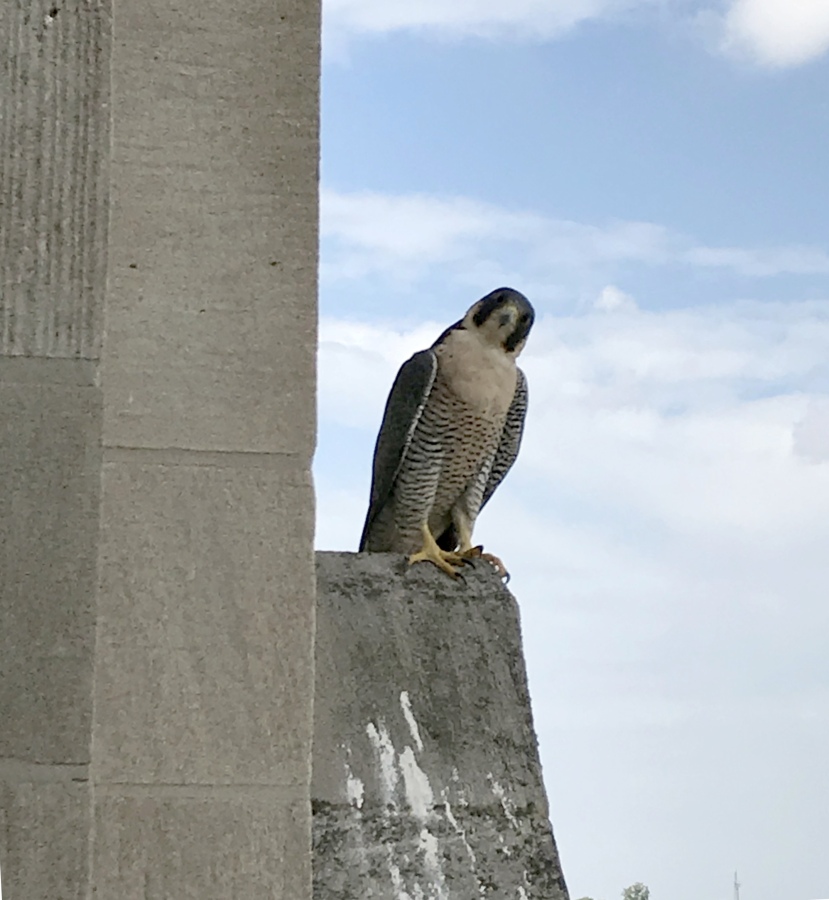
Juffs’ earliest photo was taken on 4 September 2019, so this new bird arrived on or before that date. Here it is on 4 September.
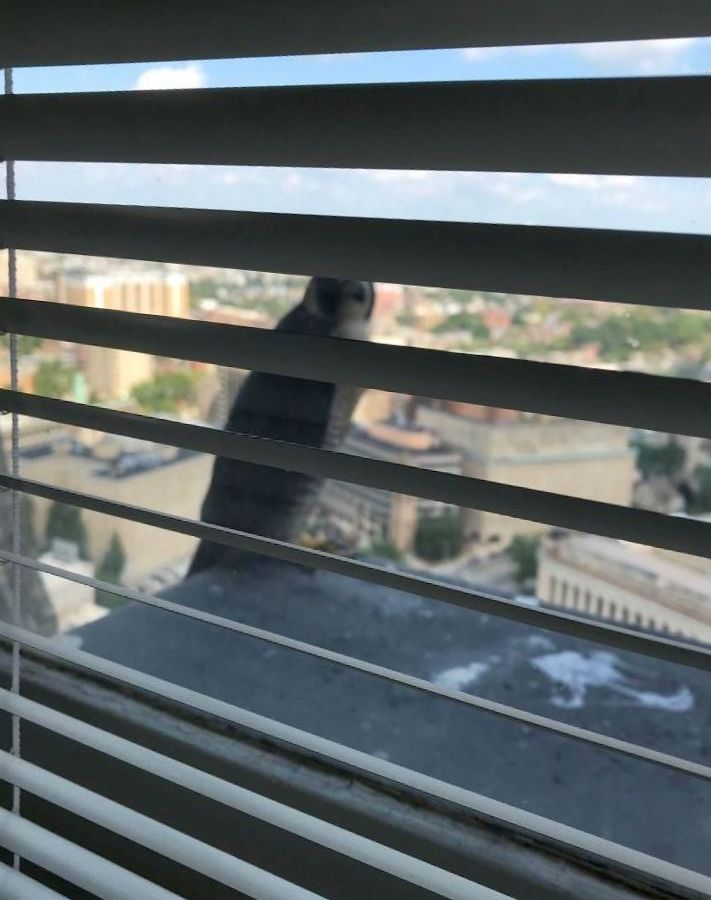
Each peregrine has its own favorite perches on the “cliff” so when you see a peregrine consistently perched in a new place, it may be a new bird. Juffs remarked that Dorothy was the last peregrine to use these perches. She passed away in 2015. Hope and Terzo never use this spot but Dorothy often ate lunch on the air conditioner (click here for a January 2014 video of Dorothy eating lunch by Alan Juffs).
The new bird, like the late Dorothy, doesn’t mind seeing people inside Juffs’ office. It even seems curious. I wonder if it hatched on a building.
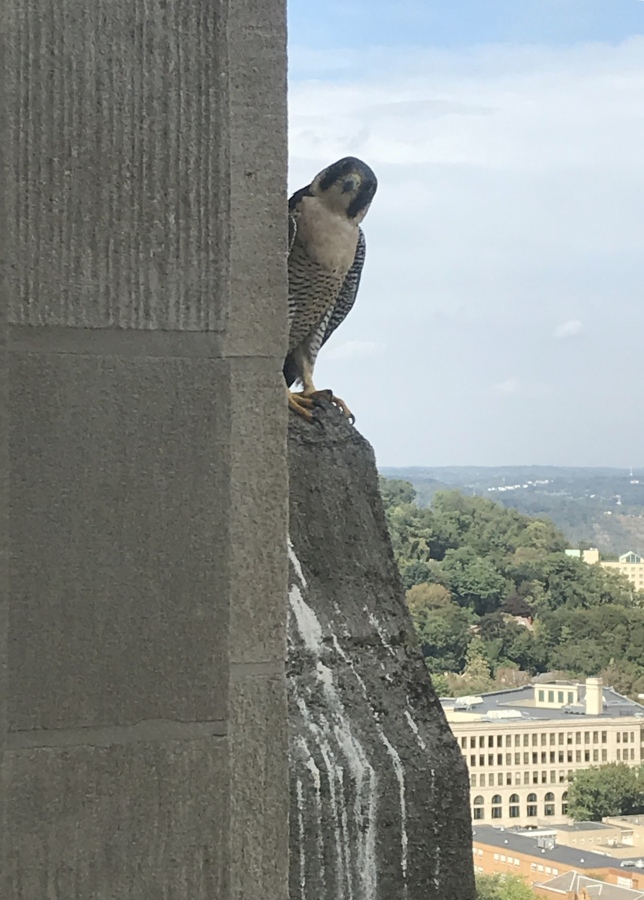
The new bird is a “talker.” In Juffs’ video below the new peregrine calls to another one.
Sometimes another peregrine calls in the distance. Here, the new peregrine listens.
In an effort to determine the bird’s sex I looked for nestbox snapshots from late August to now. As far as I can tell this peregrine has never courted at the nest. Unfortunately there’s a data gap from 18 August to 5 September but I can tell that the gravel has not been disturbed since the nesting season. I’m not finished reviewing September data, but so far no peregrines have moved the gravel since 10 July 2019 when Hope visited alone.
Right now the best way to determine the bird’s sex is to identify it on the building and watch it fly off with its mate to see which one is bigger (females are larger). I’ve seen the pair flying together — clearly male and female by size — but I’ve not been able to tell who is who.
What I do know is this: There are only two peregrines at Pitt right now, one male and one female. The new bird is one of them. It replaced either Hope or Terzo — I just don’t know which one.
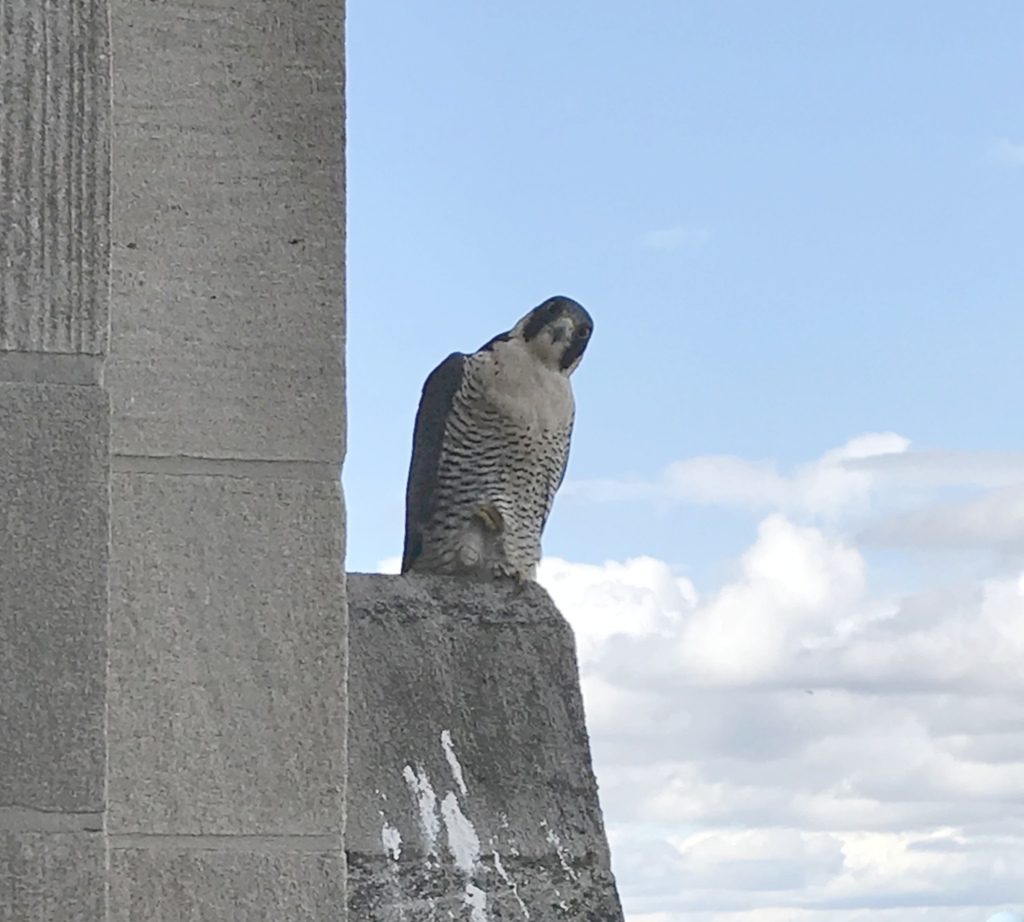
I’ll be spending a lot of time on campus, hoping for that crystal clear moment when I see the pair flying together and can tell who is who.
Meanwhile a big thank you goes out to Dr. Alan Juffs for his photographs and observations. Without his help we’d never know there is a new peregrine at Pitt.
(photos and videos by Alan Juffs, Director of the English Language Institute, University of Pittsburgh)
Morela
